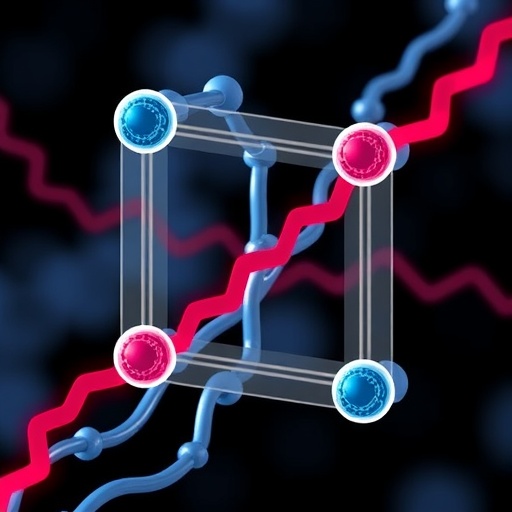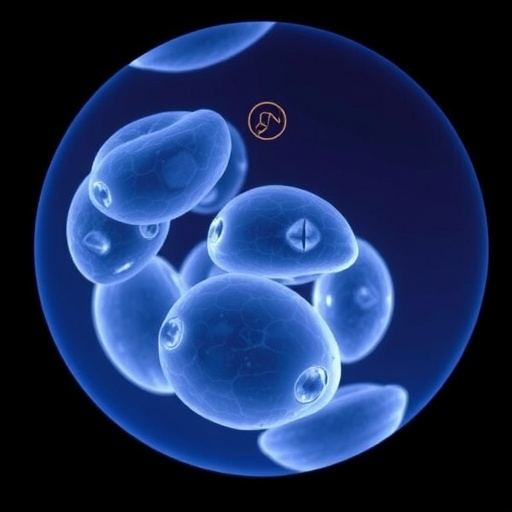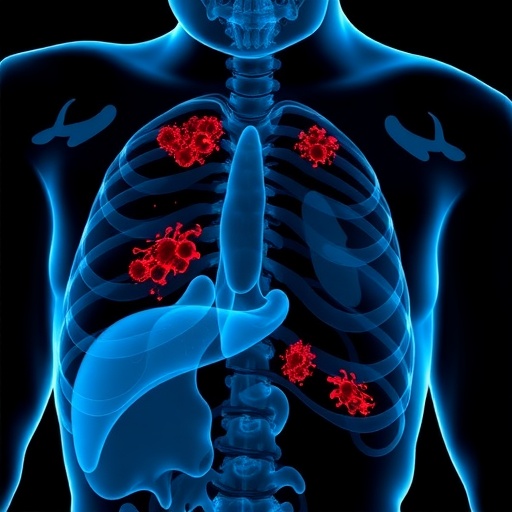In a groundbreaking advancement at the intersection of synthetic biology and protein engineering, researchers have unveiled a pioneering method to fabricate calcium ion channels with unprecedented precision. These engineered channels mimic the intricate selectivity filters of native ion channels, a feature that has long eluded design efforts due to the atomic-level complexity involved in coordinating ion-specific residues. By leveraging a novel bottom-up computational approach centered around RFdiffusion, the team has not only designed symmetric oligomeric channels poised to capture and transport Ca²⁺ ions selectively but also demonstrated their functionality with remarkable accuracy.
Ion channels are fundamental to myriad biological processes, acting as gatekeepers for ion flow across cellular membranes. Among these, calcium channels play vital roles in signaling pathways, vascular regulation, and muscle contraction, making their precise control integral to both natural physiology and therapeutic applications. Historically, recreating such channels synthetically has been hindered by the inability to replicate the exact geometry of the selectivity filter—the narrow region within the pore that discriminates between ions based on size, charge, and coordination chemistry. The innovation presented here confronts this challenge head-on.
The research team commenced by defining specific geometries for calcium-coordinating residues, fundamental to the selectivity filter’s performance. Utilizing the RFdiffusion method, an advanced computational tool grounded in protein structure prediction and design, the scientists constructed transmembrane proteins allosterically arranged to embody these precise residue configurations. This symmetry-based design allowed for the creation of channels with both tetrameric and hexameric stoichiometries, each presenting a uniquely tailored coordination environment for calcium ions.
What sets this work apart is not only the theoretical design but the empirical validation of these channels’ function. Patch-clamp electrophysiology—a gold standard for assessing ion conductance—revealed that these synthetic channels exhibit a pronounced preference for calcium ions over sodium and other divalent cations, including strontium and magnesium. Importantly, this selectivity collapsed when the coordinating residues were mutated, underscoring the critical role of the engineered geometry in ion discrimination.
The structural fidelity of the designs was rigorously confirmed using cryogenic electron microscopy (cryo-EM). The hexameric channel’s experimentally determined structure matched the computational model with near-atomic accuracy, an achievement that underscores the precision of the RFdiffusion approach. This high resolution structural confirmation elevates the work well beyond prior attempts where designed pores lacked definitive experimental structural validation.
Beyond proving selective conductance and structural accuracy, the study offers a versatile framework for exploring the fundamental physics of ion selectivity. By enabling the construction of channels with systematically varied coordination numbers and entrance geometries, researchers can now experimentally dissect how minor variations in residue orientation and spacing impact ion permeation and specificity. This capability opens new avenues for understanding ion channel biophysics that were previously constrained to theoretical models.
Importantly, these advances are not confined to calcium. The design blueprint can potentially be adapted to engineer selective channels for other biologically and industrially relevant ions. This flexibility enhances the potential for creating tailored ion transport systems for synthetic biology applications, implantable biosensors, or targeted chemogenetic tools for manipulating cellular activity with unprecedented specificity.
The engineered channels also integrate multiple transmembrane helices to buttress the pore structure, enhancing stability while accommodating the selective filter at the channel entrance. This architectural robustness is crucial for mimicking the complex dynamics of native channels and ensuring consistent performance under physiological conditions.
The implications for medicine and biotechnology are profound. Selective ion channels designed from first principles promise transformative impacts on drug delivery, neuromodulation, and biosensing, where precise ionic control is paramount. Moreover, the modularity of the approach suggests a future where ion channels can be custom-made for particular cellular contexts or environmental stimuli, ushering in a new era of functional biomolecular devices.
The study also serves as a testament to the power of integrating cutting-edge computational protein design with experimental validation techniques. By bridging in silico design with functional assays and high-resolution imaging, the researchers have established a workflow poised to rapidly accelerate the development of ion channel therapeutics and tools.
This landmark contribution was led by Liu, Weidle, and Mihaljević, among others, and published in Nature, reflecting the transformative potential of rational design in membrane protein engineering. Their work not only redefines what is technically achievable in synthetic ion channel construction but also provides a strategic roadmap for future innovations.
As the field advances, the ability to design ion channels from the ground up with atomistic precision may also illuminate longstanding questions about ion selectivity mechanisms in natural channels—questions that have challenged biophysicists for decades. By matching or even surpassing nature’s precision, engineered proteins become both tools and models in the pursuit of fundamental biological knowledge.
In summary, this research ushers in a new paradigm in protein design, marrying computational ingenuity with empirical rigor to recreate and manipulate one of biology’s most intricate molecular machines. The bottom-up design of calcium channels, validated structurally and functionally, marks a turning point that will undoubtedly inspire a cascade of innovations in synthetic membrane protein engineering and beyond.
Subject of Research: Design and engineering of selective calcium ion channels with defined selectivity filter geometries using computational protein design methods.
Article Title: Bottom-up design of Ca²⁺ channels from defined selectivity filter geometry.
Article References:
Liu, Y., Weidle, C., Mihaljević, L. et al. Bottom-up design of Ca²⁺ channels from defined selectivity filter geometry. Nature (2025). https://doi.org/10.1038/s41586-025-09646-z
Image Credits: AI Generated
Tags: calcium ion channelscalcium signaling pathwayscellular membrane transportcomputational protein designion channel functionalityoligomeric channel designProtein EngineeringRFdiffusion methodselectivity filter designsynthetic biologytherapeutic applications of ion channels






